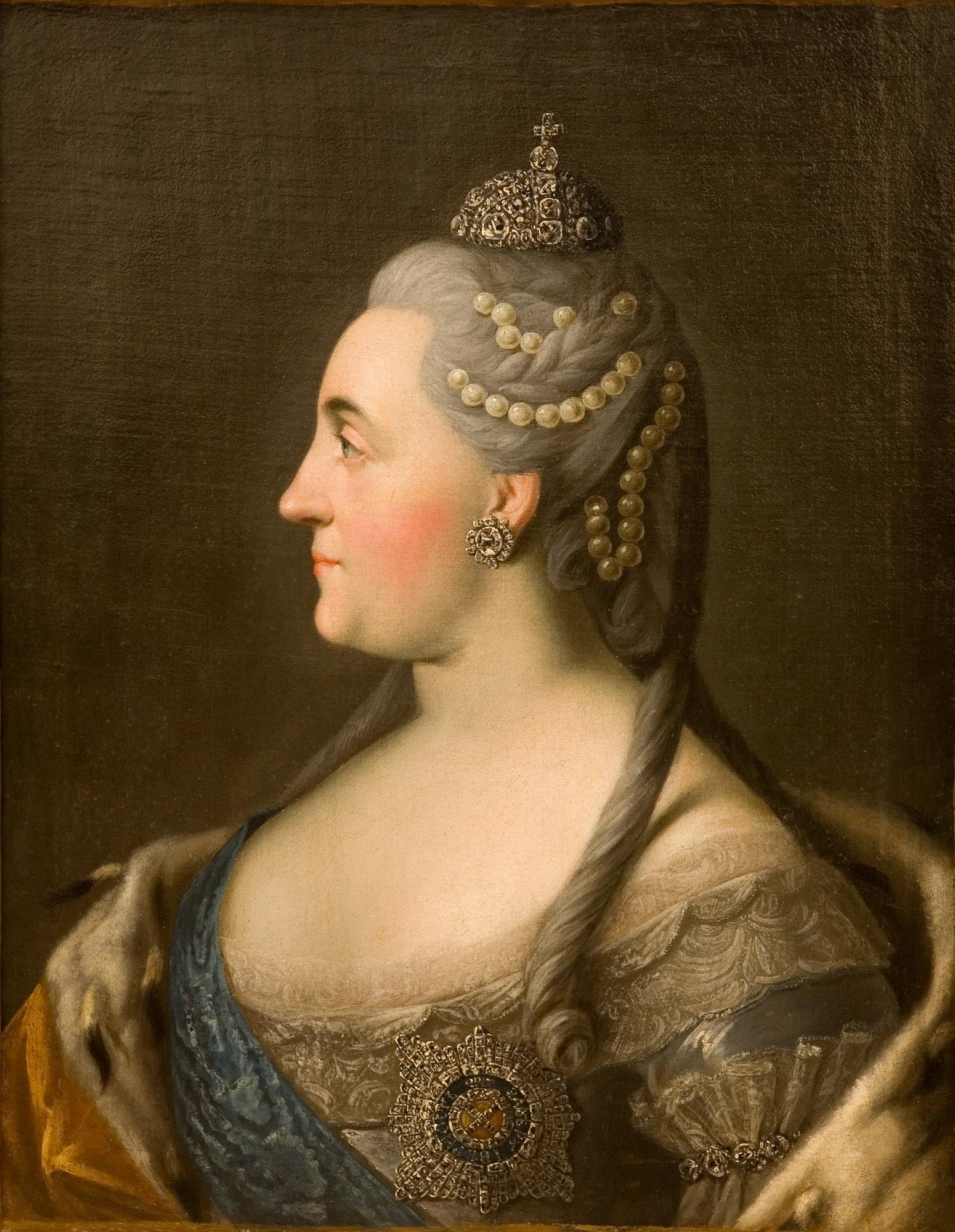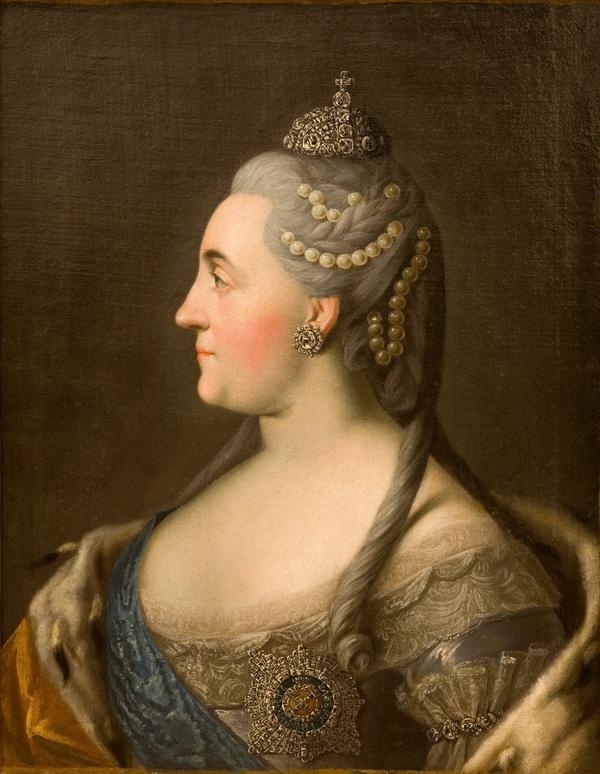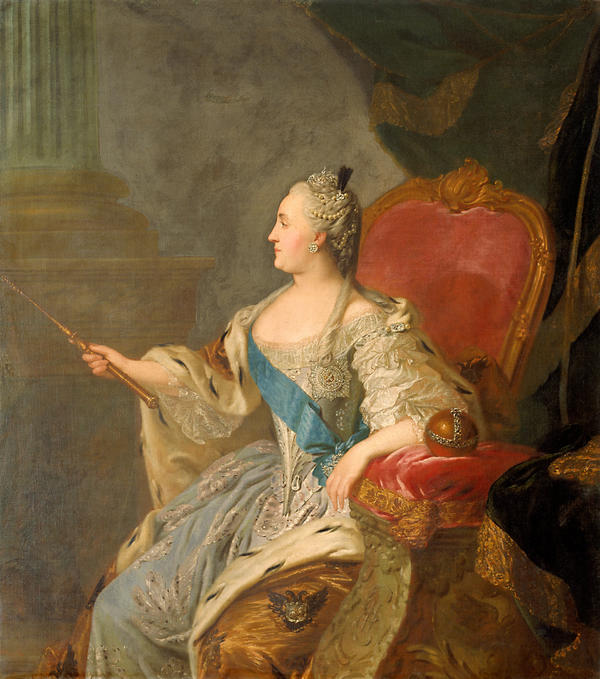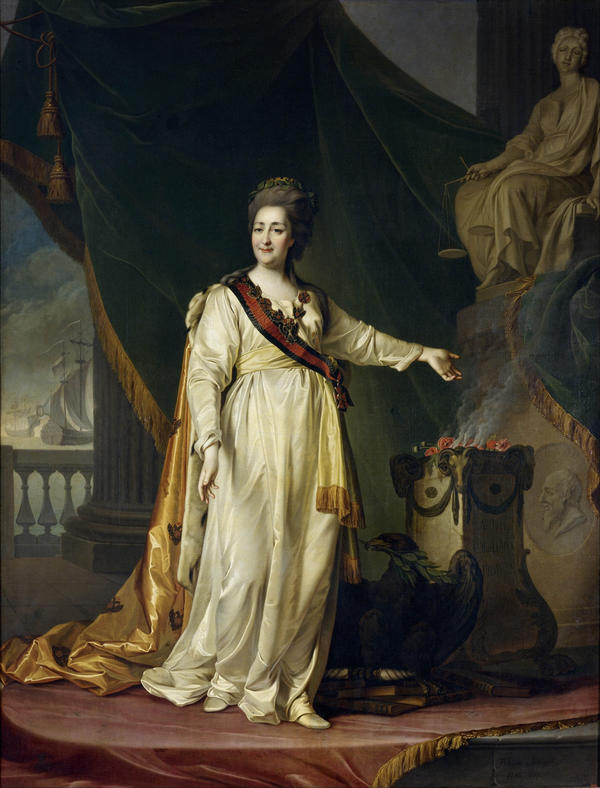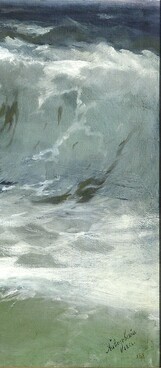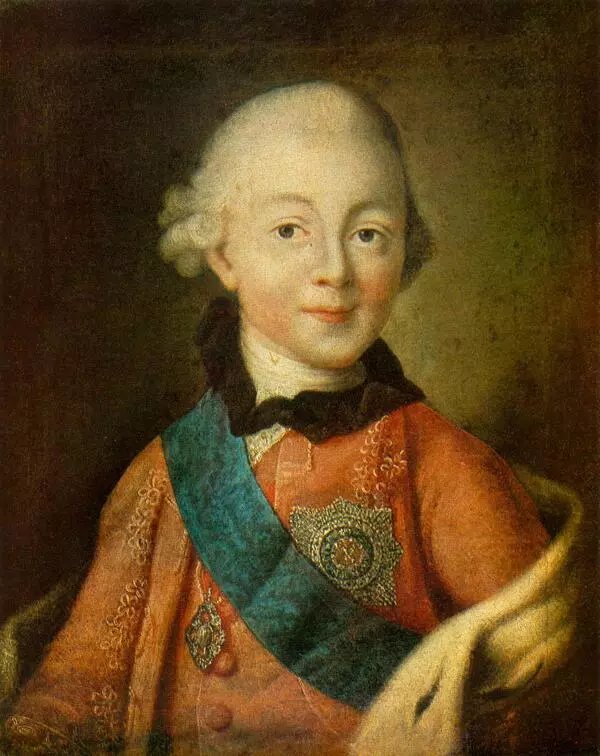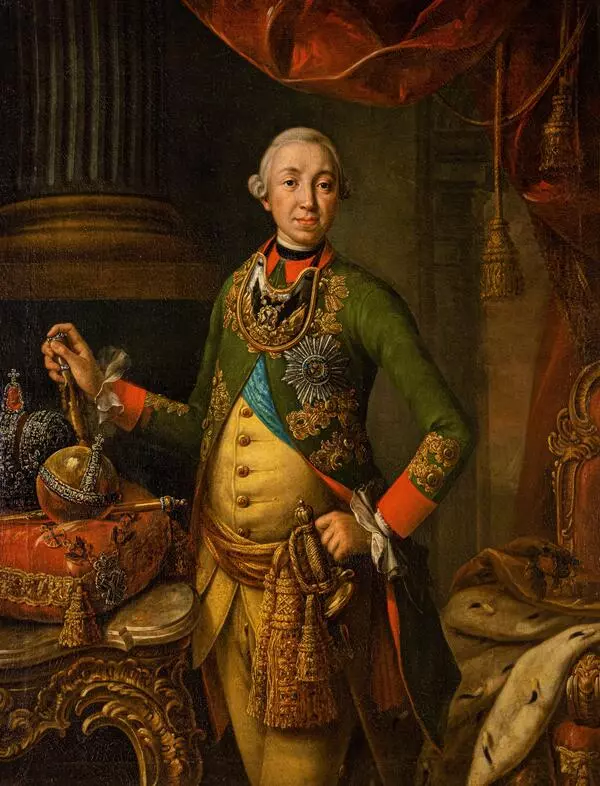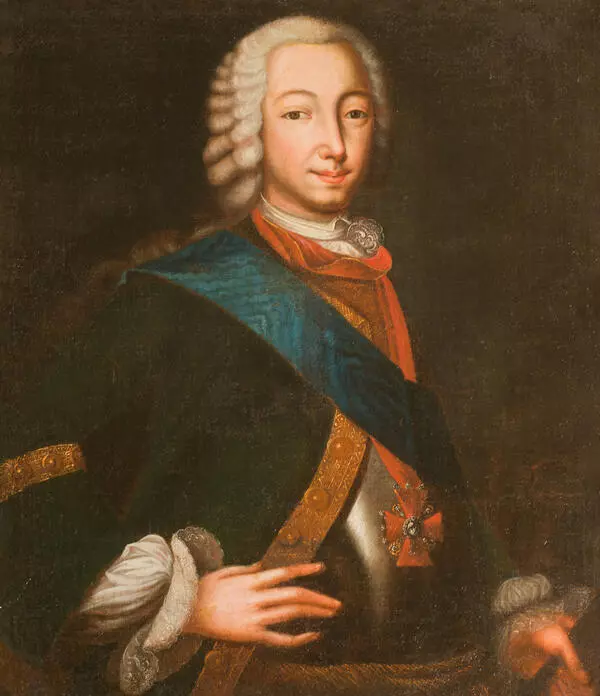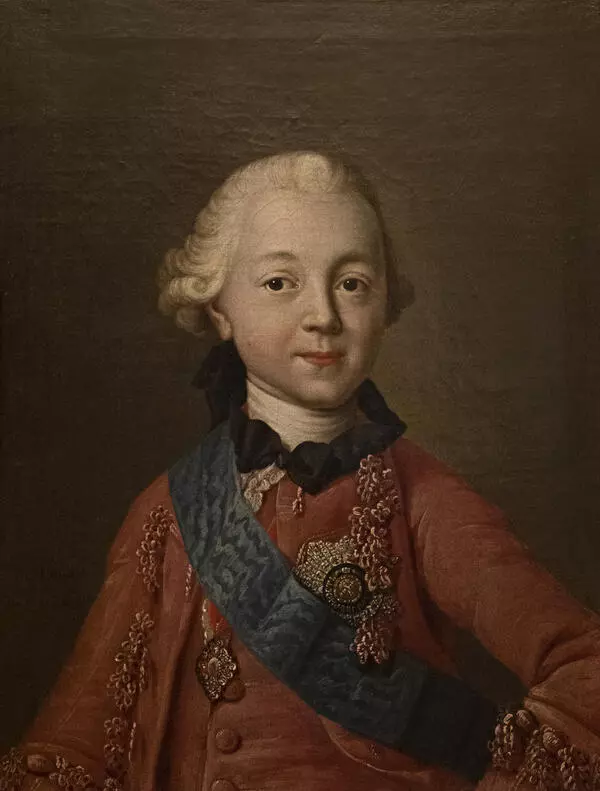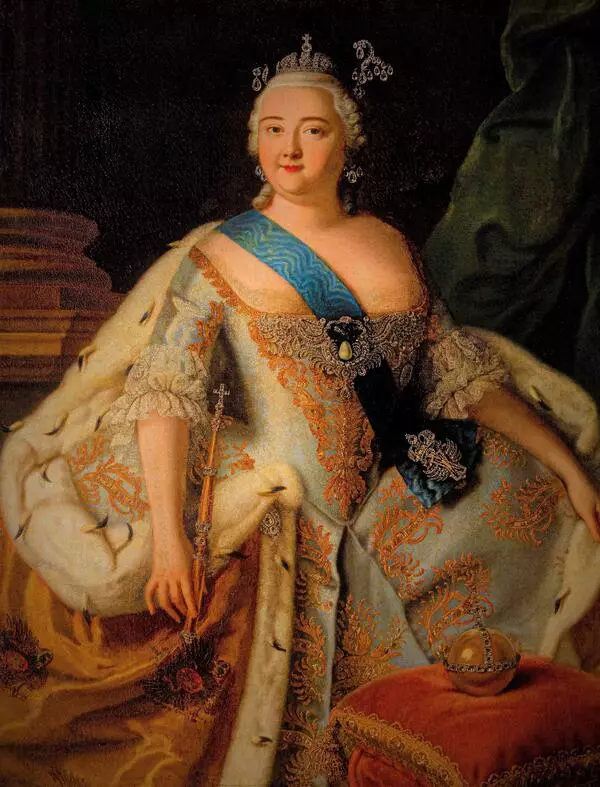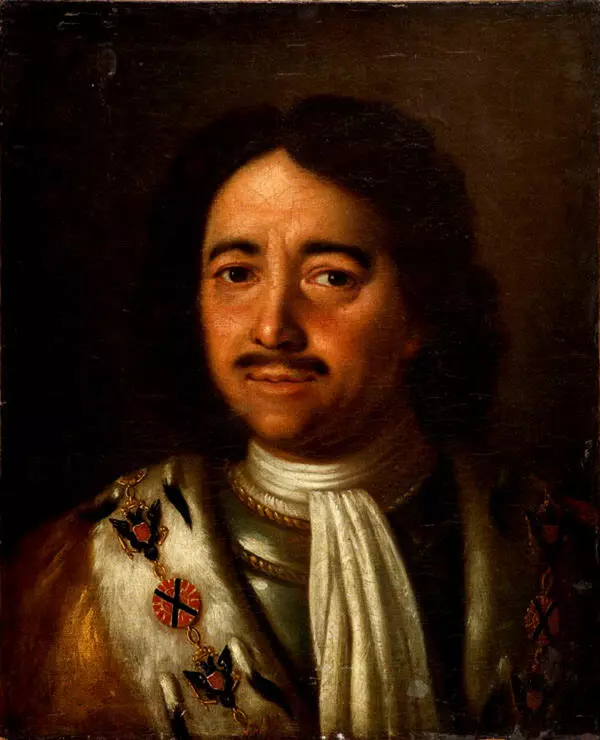Alexei Antropov painted the portrait of Catherine II in 1764. The Empress did not sit for it — the artist copied it from a sketch made by Fyodor Rokotov who later used the sketch to paint the famous coronation portrait. The image became the benchmark and got the title of ‘Rokotov’s Type’. Other artists, who did not have an opportunity to paint Catherine II from life, copied this image. Researchers believe that the profile, resembling an ancient cameo, gave the image of Catherine a “perfect and timeless character”.
Portrait of Catherine II
Время создания
1764
Размер
63,3x48,6 cm
Техника
Canvas, oil
Коллекция
21
Открыть в приложении#1
Alexei Antropov
Portrait of Catherine II
#2
#3
Fyodor Rokotov. Portrait of Catherine II. Source: wikipedia.org
Reproducing the works of others was not considered shameful in the XVIII century. Young artists learned technical skills when copying the works of recognized masters. Besides, the copes made were not exact reproductions of the “gold standard” — painters would introduce stylistic changes of their own.
#5
Numerous artists of that time painted portraits of Catherine II. They depicted her on hunting trips and outings, in a solemn atmosphere and even as a goddess. Historian Eugene Pchelov specifically singled out her “signature smile” on the portraits. He wrote that, in the XVIII century, models were often depicted smiling — this way the subjects looked prettier. But the smile of “Princess Fike”, as she was called in her youth, was something much bigger than that. “This is an instrument of her politics, her communication, one of many, but an important one. If we turn to the memories of her contemporaries, in most cases we will find a description of this very friendly, gracious and endearing smile”, wrote the scholar.
#7
Dmitry Levitsky “Portrait of Catherine II — legislator in the temple of the goddess of Justice”, 1783. Source: wikipedia.org
Antropov carefully worked out the fabrics in the chest-high portrait which is part of the collection of the Yaroslavl Museum of Fine Arts. Catherine’s ermine robe looks really soft, the lace is light and transparent and the pearls in her hair look smooth. Researchers of the artist’s creative works expressly emphasized the ability of the master to convey materials.
#8
The artist created many portraits of Catherine II. In 1762, he participated in the celebrations of her coronation. However, he never became the court painter. Antropov did a lot of commissioned works, painted portraits, plafonds, created icons and monumental paintings for churches. He opened a private school of painting in St. Petersburg. His teaching methods ran counter to the principles of the Imperial Academy of Fine Arts — Antropov believed that it was essential to truly reflect the models’ external features, rather than to create idealized images.
#15
His striving for realism is clearly visible in the ceremonial portrait of Emperor Peter III. The master carefully depicted all the regal attributes of power — the orb, the scepter and the scapular. At the same time, the emperor looks homely — the author depicted his narrow shoulders and the protruding small belly. However, Antropov did not create a parody of the Emperor — he just sought to be realistic. Peter III appreciated the portrait as he thought it looked very much like him.
#14
There were many would-be famous painters among Alexei Antropov’s students, for example, Peter Drozhdin and Dmitry Levitsky. The former painted a portrait of his teacher with Antropov standing in front of his wife’s picture.
#16
Yaroslavl Museum of Fine Arts
читать дальшескрыть
00:00
00:00
1x
Portrait of Catherine II
Время создания
1764
Размер
63,3x48,6 cm
Техника
Canvas, oil
Коллекция
21
Открыть в приложении
Поделиться
